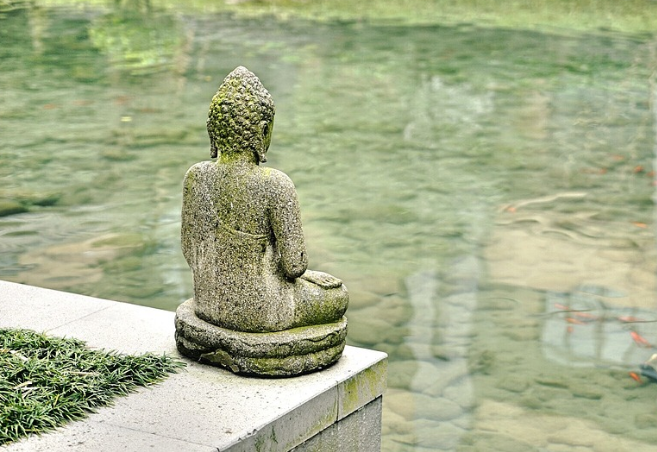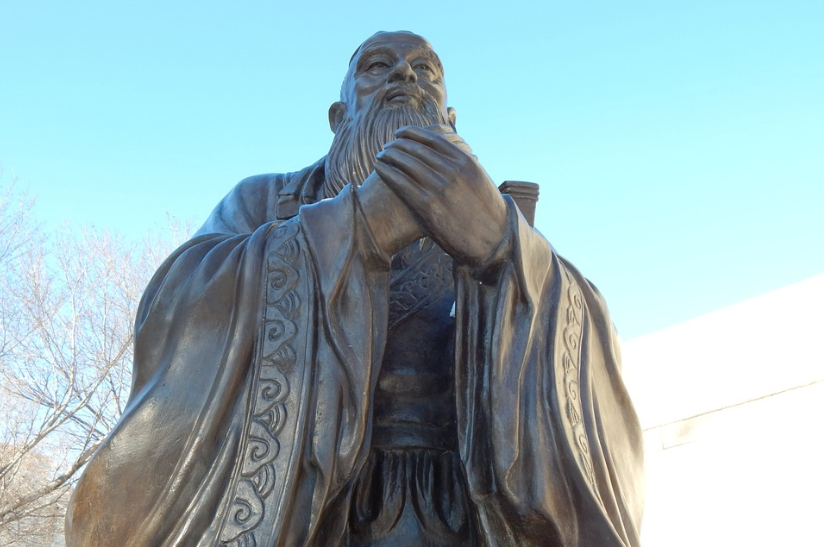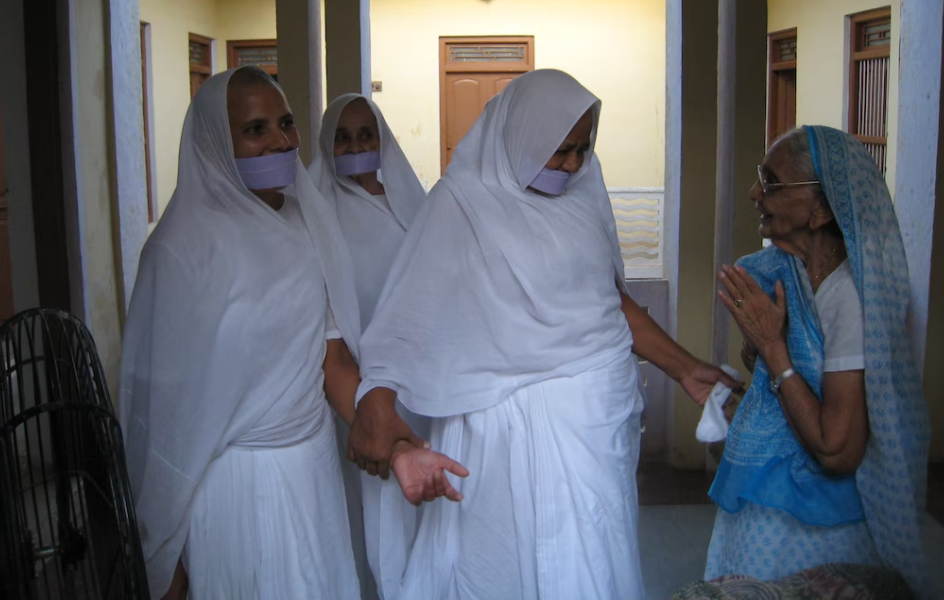Where Did Meditation Begin?
Discover the origins of meditation and the meditative practices.

Selfpause Affirmation App
Download the app to get 1,000’s of affirmation meditations and everything you need to write, record and listen to your own.
Meditation is an ancient practice that originated in ancient India. The earliest documented images of meditation are found in Indian wall paintings, dating back to about 5000-3500 BCE. These paintings depict people in meditative poses, with eyes closed. Meditation is also described in the oldest written text, the Vedas. These texts, which describe meditative practices, were passed down orally for many centuries.
Buddhism

Meditation is a practice with roots in Buddhism. Today, it is used by health practitioners for many different conditions. It is also popular among professional athletes, CEOs, and Silicon Valley programmers. It is even taught in schools as a way to improve concentration and manage stress. However, the roots of meditation in Buddhism are not so obvious.
Buddhists have used various types of meditation practices for thousands of years. In fact, meditation is one of the most ancient forms of spiritual practice. Throughout the ages, meditation has been practiced by people from all walks of life. Many ancient religions practiced meditation. In fact, meditation became a formal spiritual path in the time of Buddha, who lived in Southeast Asia over two thousand years ago. The Buddha’s teachings on meditation were passed down through many generations. The Buddha taught meditation techniques that included sitting in quiet awareness and breathing deeply. He also taught the three pieces of training for awakening, which consisted of the study of proper ethics and wisdom.
Meditation is also associated with Asian spiritual traditions, including Theravada, Zen, and Tibetan Buddhism. Improvements in transportation and communication in the 19th century stimulated Western interest in these Eastern religious traditions.
Confucianism

While meditation practices began in the Eastern world, the Western world only began to become interested in these practices in the 1700s. Meditation was first mentioned in religious texts of the East, including the Upanishads, which are believed to have been written between the eighth and fifth centuries BCE. Also, in the Mahabharata, the text called the Bhagavad Gita contains references to meditation techniques.
Confucianism began with the Han dynasty, which ruled between 202 BCE and 220 CE. This was a time when Confucianism was widely accepted in upper-class societies. Although Confucianism did not start suddenly, it gradually grew in popularity and became an orthodoxy. Confucianism was influenced by Buddhist ideas, and practices as well as Daoist ideas.
Confucianism was founded by the philosopher and teacher Confucius. It still holds sway in China today and emphasizes morality, social justice, and personal growth. Its form of meditation, known as Jing Zuo, has a focus on self-improvement.
Jainism

In Jainism, the process of meditation is known as “sadhana” (salvation path). The primary aim of meditation is to gain the realization of one’s true nature and attain salvation. Ultimately, it is a way to bring the soul into complete freedom and equanimity. The process can be broadly classified into three different types: dharmya dhyana, shiksha dhyana, and shukr dhyana.
Meditation in Jainism is often done with the help of a chant. The words of the chants are composed of three syllables: sat, dhwa, and ti. The chants and mantras help the Jain quiet their mind and bring their passions under control. The most famous prayer in Jainism is the Pancha Namaskara. It is a prayer in which the practitioner expresses surrender, praise, and request to God. The sounds of this ancient language are heard at every religious gathering. All Jain people learn the language from childhood.
Besides meditation, Jain religion also stresses the importance of purifying the body. The tradition stresses the importance of fasting, control of the diet, and abstention from fatty, rich foods. In addition, pious Jains will set aside a certain amount of time each day to meditate and perform ritual actions. This may take place in a temple or a meditation hall.
Yogis

It’s unclear when meditation began for yogis, but scholars have found traces of meditation in caves as early as the fourth century BCE. The Chinese book Zhuangzi, which dates from the late Warring States period, describes meditative practices. Another source, the Neiye, dates from the 4th century BCE. While no one knows for certain when meditation began, there are numerous references to meditation in multiple religions and cultures.
The ancient roots of yoga emphasize the practice of being still and present in the body. Buddhism and Daoism have roots in yoga, and many of these traditions emphasize the importance of turning thoughts from everyday anxieties. The practice of mindfulness, or self-awareness, is closely associated with meditation.
In the late 1800s, scientists began studying the practices of yogis in the West. One of the first yogis studied by Western scientists was Swami Rama. He was examined by scientists in the Menninger Clinic in the 1960s and showed that he could control his bodily functions while sitting still. In addition, he was able to control his heartbeat and stop it from pumping for several seconds. He also produced a difference in skin temperature on the sides of his hand. Using his hands, he could also produce alpha, delta, theta, and gamma brainwaves on demand.
Sages

The emphasis on the role of sages in Buddhism has various historical roots. The Doctrine of the Mean and Mencius’ conception of good human nature have both contributed to the conception of statehood. While early Confucianism focused on the mundane world, Buddhism embraced the concept of love as encompassing the whole universe.
Meditation is the practice of focusing your mind on a single thought. It is a very beneficial practice, and the repeated practice of meditating helps the mind develops. It is said that even 15 minutes of meditation a day can have great results. It helps people reduce stress and improves concentration and sleep. It also sharpens mental faculties, which makes it an important part of a balanced, healthy lifestyle.
The Jewish esoteric tradition of Kabbalah also developed meditation practices. In the 1700s, these texts were translated into European languages.
Transcendental meditation

The Transcendental Meditation movement began in India in the 1950s. It was taught publicly by Maharishi Mahesh Yogi in 1955, and by the 1960s it had reached millions of people worldwide. By the 1970s, the Beatles and other celebrities began practicing the technique. By the early 1980s, the International Meditation Society and the Spiritual Regeneration Movement Foundation of India were established, and the practice had spread worldwide.
The Transcendental Meditation movement quickly caught on with ordinary people and became associated with the New Age religion. It was a time when people were exploring drugs like LSD, and the practice of meditation appeared to have similar benefits. The practice gained popularity among many New Age believers because of its holistic approach to life and spirituality.
In the 1970s, Transcendental Meditation centers appeared on over a thousand college campuses, and 1.5 million people had studied the technique with a teacher. By the early 21st century, the practice was so widespread that the number of formally organized Transcendental Meditation students was unknown.
Jewish esoteric tradition

Many of us have probably heard of meditation, but did you know that it has its roots in the Jewish esoteric tradition? The Jewish esoteric tradition includes three main branches: Kabbalah, Theosophy, and Sufism. As one of the oldest religions, Judaism is rich with meditation teachings. In fact, much of the modern practice of meditation is based on Jewish teachings.
Jewish esoteric literature traces its roots to the Tannaic period when Jewish sages practiced mystical practices that aimed at elevating the soul. These practices were based on the Biblical Creation story and the vision of Ezekiel. In the 11th century, Kabbalah evolved into its own distinctive conceptual framework. The Jewish esoteric tradition was still forming in the 13th century when the Zohar was compiled.
Doron’s method is derived from the teachings of Rabbi Nachman on Hitbodedut, a Jewish form of meditation. It does not use a mantra and resembles Yoga-like concentration-based techniques. But unlike Yoga, Hitbodedut affects more than the self.
Indian subcontinent

Meditation is believed to have originated in the Indian subcontinent. Some ancient wall art from the Indian subcontinent dates back to more than 5,000 BCE, and the first written records of meditation date from around 1,500 BCE in the Vedas. The Vedas contain a number of ancient meditative practices, which were passed down orally through the centuries.
Meditation in the Indian subcontinent can be traced back to about 5,000 to 3,500 BCE. The first documented evidence of meditation in India dates back to the wall arts of the Indian subcontinent, dating from between 5,000 and 3,500 BCE. Meditation is also an art form; many people in India practice it through different art forms. For instance, when drawing, Pallavi teaches students to breathe deeply while working on their drawings.
Buddhist texts reference different forms of meditation. Buddha himself sought out enlightened teachers and taught his followers the importance of meditation. Later, in the 18th century, the ancient teachings of meditation spread throughout the Western world. The Tibetan Book of the Dead was published in 1927, and the Vipassana movement emerged in Burma in the 1950s. This work eventually spread to Europe.
Our Top FAQ's
Meditation is a practice that involves calming the mind and increasing focus and awareness. The origins of meditation are difficult to trace, as the practice has been a part of many different cultures and traditions throughout history. However, it is generally believed to have originated in ancient India, where it was a part of many spiritual and religious traditions, including Hinduism and Buddhism.
As the practice of meditation spread to other parts of the world, it has evolved and adapted to different cultural and religious contexts. For example, in the Western world, meditation is often seen as a secular practice that is used for relaxation and stress reduction, rather than as a spiritual or religious activity.
The earliest known references to meditation can be found in ancient Indian texts, such as the Vedas and the Upanishads. These texts describe a variety of meditation techniques and practices that were used by ancient Indian sages and mystics.
There are many different traditions or schools of meditation that have developed over time, each with its own unique techniques and practices. Some of the most well-known traditions include Zen meditation, Vipassana meditation, and Transcendental Meditation.
Over time, the practice of meditation has changed in some ways, but it has also remained the same in many ways. For example, while the techniques and practices used in meditation may have evolved over time, the basic goal of achieving a state of calm and focus has remained constant. Additionally, the spiritual and religious significance of meditation has remained an important aspect of the practice for many people throughout history.
